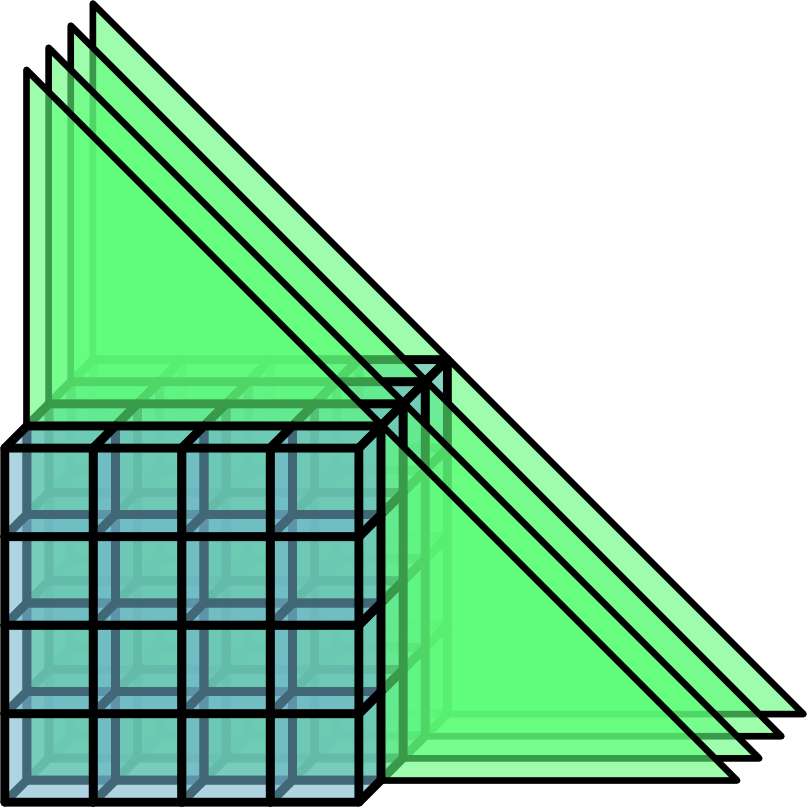This is the promised follow-up to Rendering a Screen Covering Triangle in OpenGL (with no buffers), except this time the goal is to write a shader that accesses every location in a 3d texture (volume). We use the same screen covering trick as before to draw a triangle to cover a viewport match to the X and Y dimensions of the volume, and we use instanced rendering to draw repeated triangles for each layer in the Z-dimension.
The vertex shader looks the same as before with the addition of the instanceID.
flat out int instanceID;
void main()
{
float x = -1.0 + float((gl_VertexID & 1) << 2);
float y = -1.0 + float((gl_VertexID & 2) << 1);
instanceID = gl_InstanceID;
gl_Position = vec4(x, y, 0, 1);
}The fragment shader can then recover the voxel coordinates from gl_FragCoord and the instanceID.
flat in int instanceID;
void main()
{
ivec3 voxelCoord = ivec3(gl_FragCoord.xy, instanceID);
voxelOperation(voxelCoord);
}Very similar to drawing the single screen covering triangle, we set our viewport to the XY-dimensions of the volume, bind a junk VAO to make certain graphics drivers happy, and call glDrawArraysInstanced with the Z-dimension of the volume, so that we draw a triangle per-slice of the volume.
glViewport(0, 0, width, height);
glBindVertexArray(junkVAO);
glDrawArraysInstanced(GL_TRIANGLE_STRIP, 0, 3, depth);Which would look sort of like the following:

This can be useful for quickly processing a volume. Initially, I used this as an OpenGL 4.2 fallback (instead of compute shaders) so that I could still use the NSight debugger, until I realized this approach was actually outperforming the compute shader. Of course, when to use compute shaders, and how to use them effectively deserves a post of its own.
Citation
@online{rauwendaal2014,
author = {Randall Rauwendaal},
title = {Rendering {Volume} {Filling} {Triangles} in {OpenGL} (with
No~Buffers)},
date = {2014-08-09},
url = {https://raegnar.github.io/rauwendaal.net//posts/2014_08_09 - Rendering Volume Filling Triangles in OpenGL (with no buffers)},
langid = {en}
}